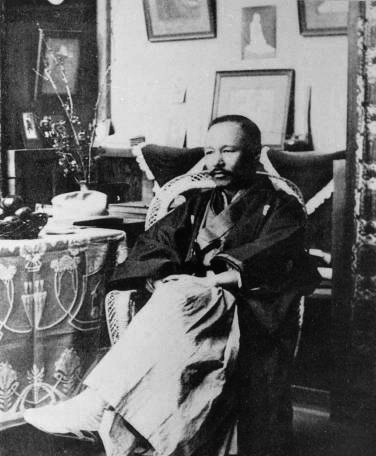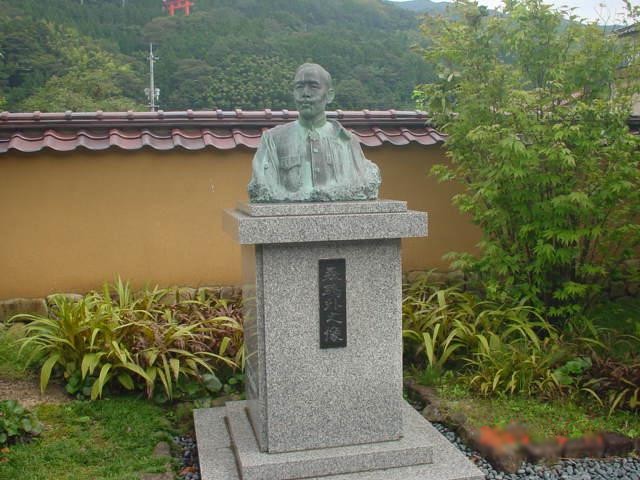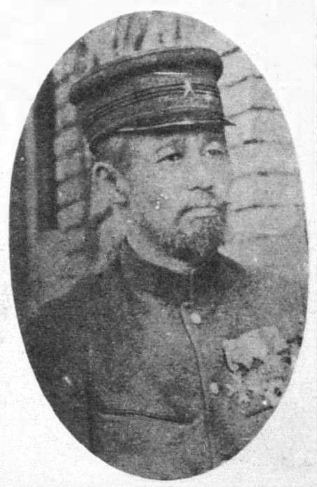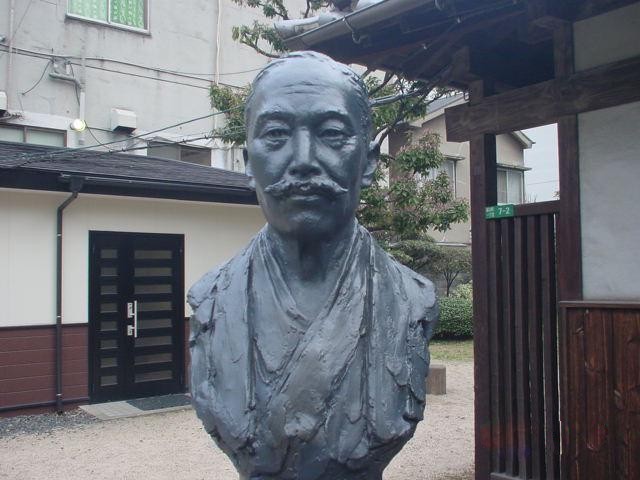<Back to Index>
- Philosopher and Astronomer Giordano (Filippo) Bruno, 1548
- Writer and Physician Mori Ōgai, 1862
- Cofounder of Vlaamsche Volkspartij Lodewijk De Raet, 1870
PAGE SPONSOR


Mori Ōgai (森 鷗外 / 森 鴎外, February 17, 1862 July 8, 1922) was a Japanese physician, translator, novelist and poet. Gan (雁 The Wild Geese, (1911 13)) is considered his major work.
Mori was born as Mori Rintarō in Tsuwano, Iwami province (present day Shimane prefecture). His family were hereditary physicians to the daimyō of the Tsuwano Domain. As the eldest son, it was assumed that he would carry on the family tradition; therefore he was sent to attend classes in the Confucian classics at the domain academy, and took private lessons in rangaku, and in the Dutch language.
In 1872, after the Meiji Restoration and the abolition of the domains, the Mori family relocated to Tokyo. Mori stayed at the residence of Nishi Amane, in order to receive tutoring in the German language, which was the primary language for medical education at the time. In 1874, he was admitted to the government medical school (the predecessor of Tokyo Imperial University's Medical School), and graduated in 1881 at the age of 19, the youngest person ever to be awarded a medical license in Japan. It was also during this time that he developed an interest in literature, reading extensively from the late Edo period popular novels, and taking lessons in Chinese poetry and literature.
After graduation, Mori enlisted in the Imperial Japanese Army as a medical officer, hoping to specialize in military medicine and hygiene.
Mori was sent by the Army to study in Germany (Leipzig, Dresden, Munich, and Berlin) from 1884 1888. During this time, he also developed an interest in European literature. As a matter of trivia, Mori Ōgai is the first Japanese known to have ridden on the Orient Express.
Upon his return to Japan, he assumed a high rank as a medical doctor in the Japanese army and pushed for a more scientific approach to medical research, even publishing a medical journal out of his own funds.
Meanwhile, he also attempted to revitalize modern Japanese literature and published his own literary journal (Shigarami sōshi, 1889 1894) and his own book of poetry (Omokage, 1889). In his writings, he was an anti - realist, asserting that literature should reflect the emotional and spiritual domain. Maihime (舞姫 The Dancing Girl (1890)), described an affair between a Japanese man and a German woman.
In 1899, Mori married Akamatsu
Toshiko, daughter of Admiral Akamatsu Noriyoshi, a
close friend of Nishi Amane. He divorced her the
following year under acrimonious circumstances that
irreparably ended his friendship with Nishi.
At the start of the First Sino - Japanese War of 1894 1895, Mori was sent to Manchuria and, the following year, to Taiwan. In 1899, he was appointed head of the Army Medical Corps and was based in Kokura, Kyūshū. In 1902, he was reassigned to Tokyo.
In 1907, Mori was promoted to
Army Surgeon - General, the highest post within the
Japanese medical corps. On his
retirement in 1916 he was appointed director of the
Imperial Museum.
Although Mori did little writing from 1892 1902, he continued to edit a literary journal (Mezamashi gusa, 1892 1909). He also produced translations of the works of Goethe, Schiller, Ibsen, Hans Christian Andersen, and Hauptmann.
It was during the Russo - Japanese War (1904 05) that Mori started keeping a poetic diary. After the war, he began holding tanka writing parties that included several noted poets such as Yosano Akiko.
His later works can be divided into three separate periods. From 1909 1912, he wrote mostly fiction based on his own experiences. This period includes Vita Sexualis, and his most popular novel, Gan (雁 The Wild Geese (1911 13)), which is set in 1881 Tokyo and was filmed by Shiro Toyoda in 1953 as The Mistress.
From 1912 1916, he wrote mostly historical stories. Deeply affected by the seppuku of General Nogi Maresuke in 1912, he explored the impulses of self - destruction, self sacrifice and patriotic sentiment. This period includes Sanshō Dayū (山椒大夫), and Takasebune (高瀬舟).
From 1916, he turned his attention to biographies of late Edo period doctors.
As an author, Mori is
considered one of the leading writers of the Meiji period.
In his literary journals, he instituted modern literary criticism in Japan, based
on the aesthetic theories of Karl von Hartmann.
A house which Mori lived in is preserved in Kokura Kita ward in Kitakyūshū, not far from Kokura station. Here he wrote Kokura Nikki ("Kokura Diary"). His birthhouse is also preserved in Tsuwano. The two one - story houses are remarkably similar in size and in their traditional Japanese style.
One of Mori's
daughters, Mori
Mari,
influenced the Yaoi movement in
contemporary Japanese comics. Mori's sister, Kimiko,
married Koganei
Yoshikiyo. Hoshi Shinichi was one of their
grandsons.

